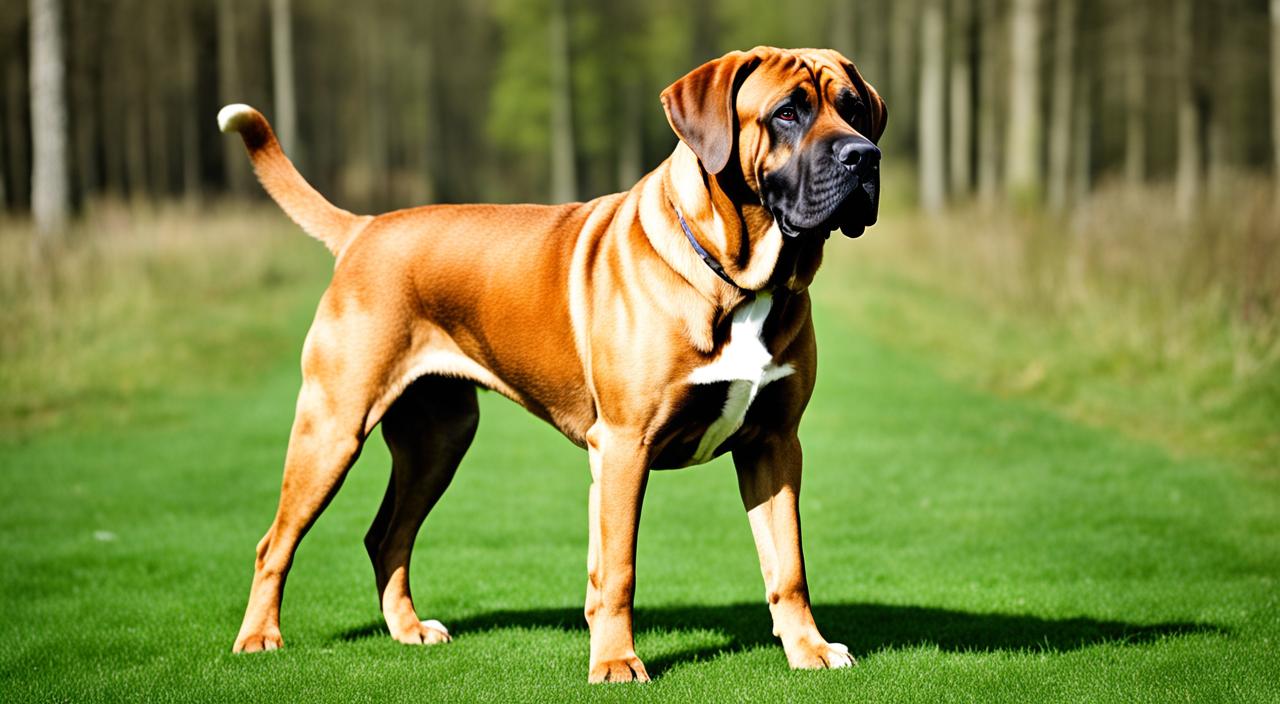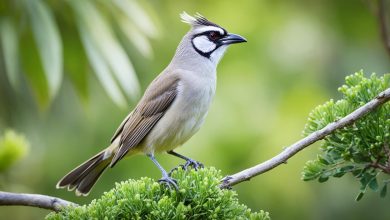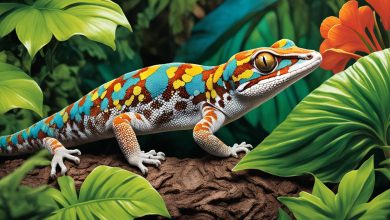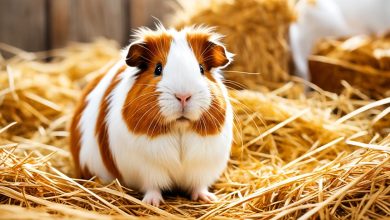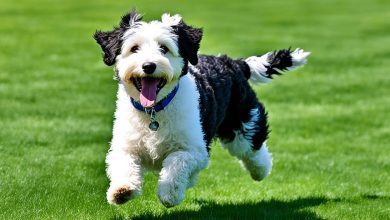I spotted a majestic sight in the park one autumn morning. A large, powerful dog with a calm demeanor strolled beside its owner. It was a Broholmer, also known as the Danish Mastiff.
This gentle giant stirred awe and curiosity within me. I felt compelled to learn more about this remarkable breed.
Broholmers stand tall at 27 to 30 inches and weigh up to 150 pounds. Despite their size, they’re known for their friendly nature. These dogs make excellent companions and thrive in homes with spacious yards.
The Broholmer I saw had a gentle yet watchful demeanor. This breed blends strength and kindness perfectly. It’s an ideal choice for those wanting a large dog with a golden heart.
Originally bred for stag hunting, Broholmers have become loving family pets. They’ve won the hearts of dog lovers across the United States. Let’s explore why these Danish Mastiffs are so special.
Introduction to the Broholmer: Denmark’s Mastiff
The Broholmer is a Danish dog breed with a rich heritage. It’s one of the largest canines worldwide, weighing up to 70 kg. This mastiff-type working dog can reach heights of 75 cm at the shoulder.
Originating from Denmark, the Broholmer’s history dates back to the Middle Ages. It served as both a guardian and hunting companion.
Origin and Historical Significance
Broholmers have royal ties dating to the 1500s. They were connected to King Frederick II and later King Frederick VII of Denmark. The breed nearly faced extinction in the early 1900s.
Dedicated Danish breeders revived the Broholmer. In 1974, a society was established to preserve this majestic Danish dog breed.
Physical Characteristics and Size
Male Broholmers typically stand 28-30 inches tall, while females measure 27-29 inches. Their weight ranges from 110-130 pounds for males and 85-130 pounds for females.
Their coat comes in yellow, golden red, or black with a black mask. The black variant is rare. Broholmers have a wide head, large black nose, and deep broad chest.
Temperament Overview
Broholmers are known for their calm and gentle nature. They’re friendly and devoted companions, excelling as family pets. Their loyalty extends to both adults and children.
Their watchful demeanor makes them excellent guardians, true to their working dog heritage. Despite their size, Broholmers are even-tempered, making them beloved among dog enthusiasts.
The Rich History of the Broholmer Breed
The Broholmer breed has a fascinating Danish history dating back to the 12th century. This majestic breed has played a significant role in Denmark’s cultural heritage. It has earned its place as a beloved national treasure.
Royal Connections and Noble Origins
Broholmers gained favor among Danish nobility, with King Frederik VII owning a cherished Broholmer named Tyrk. These gentle giants served as loyal companions and guardians in royal courts. Their status as a prestigious breed was solidified through these royal connections.
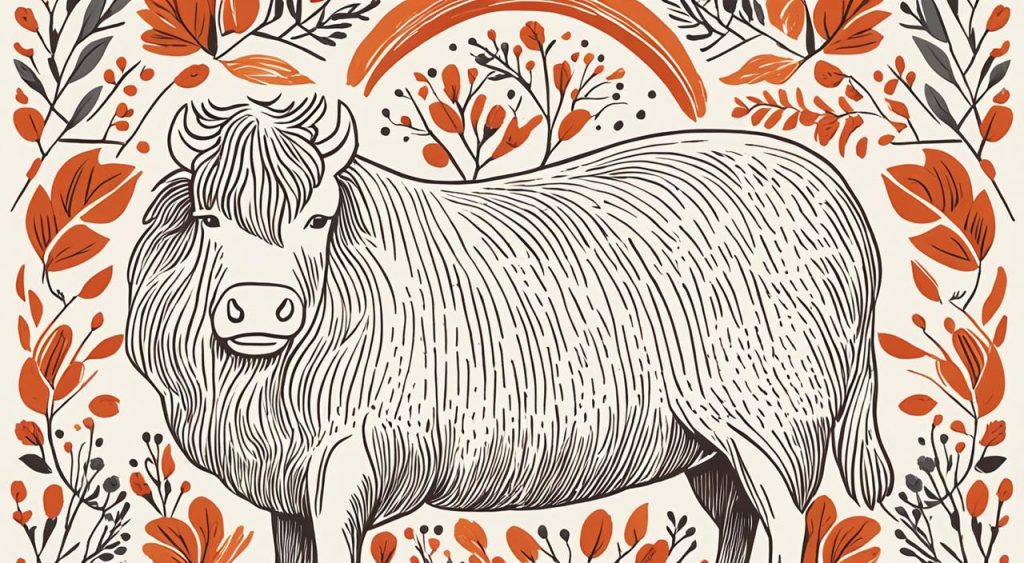
Near Extinction and Revival Efforts
The breed faced near-extinction during World War II. Dedicated enthusiasts launched a breed revival campaign. Their efforts paid off, as shown by the growth in Broholmer numbers:
- 1983: 35 purebred Broholmers
- 1999: Over 100 Broholmers at the breed club’s 25th-anniversary show
- Present day: Less than 800 Broholmers worldwide, mostly in Denmark
Modern-day Recognition and Popularity
The Broholmer’s comeback story led to several milestones:
- 1982: Official FCI recognition
- 1998: International Breed Registry recognition
- 2009: Introduction to America
- Recent years: AKC recognition, boosting the breed’s popularity
The Broholmer continues to captivate dog lovers with its gentle nature and impressive stature. It stands as a testament to successful breed preservation efforts. The breed’s growing popularity shows the success of these conservation initiatives.
Broholmer: Physical Attributes and Appearance
The Broholmer is a large Danish dog breed with an impressive mastiff appearance. These gentle giants stand about 30 inches tall at the shoulder. Male Broholmers can weigh up to 150 pounds, while females typically range from 80-110 pounds.
Broholmers have muscular builds and massive heads with floppy ears and powerful jaws. Their short, dense coat comes in golden red, black, or golden yellow. Some may have a yellow coat with a black mask.
Despite their size, Broholmers have a harmonious build with deep chests and strong legs. They take about three years to reach full maturity. Their physical traits suit their history as guard dogs and hunting companions.
| Characteristic | Description |
|---|---|
| Height | 70-75 cm (27.5-29.5 inches) |
| Weight | 40-70 kg (88-154 pounds) |
| Coat Type | Short, dense, smooth |
| Coat Colors | Golden red, black, golden yellow, yellow with black mask |
| Build | Muscular, massive head, strong legs |
The Broholmer’s majestic appearance truly represents large mastiff-type breeds. Their imposing size and gentle nature make them unique and cherished companions.
Temperament and Personality Traits of the Broholmer
Broholmers are gentle giants with a calm demeanor. These Danish dogs make excellent family companions. Their blend of gentleness and strength sets them apart.
Calm and Gentle Nature
Broholmers are imposing yet gentle. They stand 22 to 30 inches tall and weigh 87 to 176 pounds. Their calm nature suits families with older children.
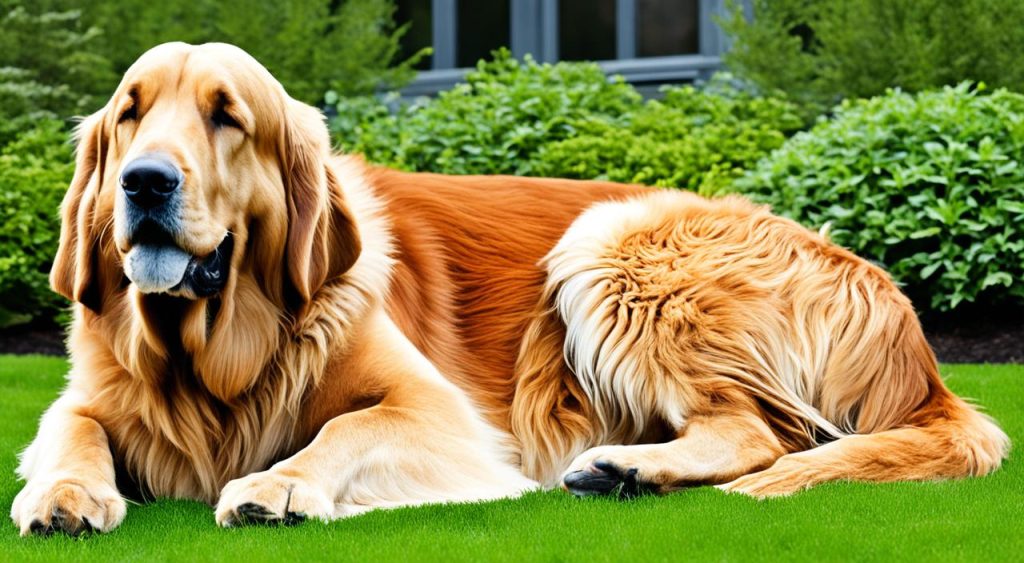
Loyalty and Protective Instincts
Broholmers excel as guard dogs due to their protective instincts. Their size alone can deter potential threats. However, they’re not aggressive by nature.
Interaction with Family and Strangers
With family, Broholmers are affectionate and patient. They form deep bonds with their loved ones. Towards strangers, they’re typically reserved but not hostile.
Early socialization helps Broholmers interact well with everyone. This ensures they’re comfortable with both family and unfamiliar faces.
- Best suited for families with older children
- Require a large home with a yard
- Need regular exercise to prevent behavioral issues
- Relatively easy to train due to intelligence and eagerness to please
The Broholmer’s unique temperament makes them valuable to the right family. Their gentle nature and protective instincts create a perfect balance.
Exercise and Activity Requirements for Broholmers
Broholmers have moderate exercise needs despite their large size. These gentle giants require balanced physical activity. A well-planned routine keeps them healthy without overexertion.
Daily walks are essential for Broholmers. Aim for one 30-minute to hour-long walk each day. This helps maintain their physical health and provides mental stimulation.
Playtime is crucial for Broholmers’ activity needs. Engage them in interactive games that challenge their mind and body. Avoid activities with excessive jumping to protect their joints.
| Activity Type | Duration | Frequency |
|---|---|---|
| Walks | 30-60 minutes | Daily |
| Playtime | 15-30 minutes | 1-2 times daily |
| Mental Stimulation | 10-15 minutes | 2-3 times daily |
Broholmers enjoy outdoor activities but aren’t overly energetic. They adapt well to a relaxed lifestyle. These dogs suit families with varying activity levels.
Consistent, moderate exercise is key for a happy, healthy Broholmer. Balance their physical needs with mental stimulation for optimal well-being.
Training and Socialization of Broholmer Dogs
Broholmers are smart dogs that learn quickly. Early training and socialization are key. These steps help shape their behavior positively.
A well-socialized Broholmer gets along with people and animals. Their intelligence makes them excel in training.
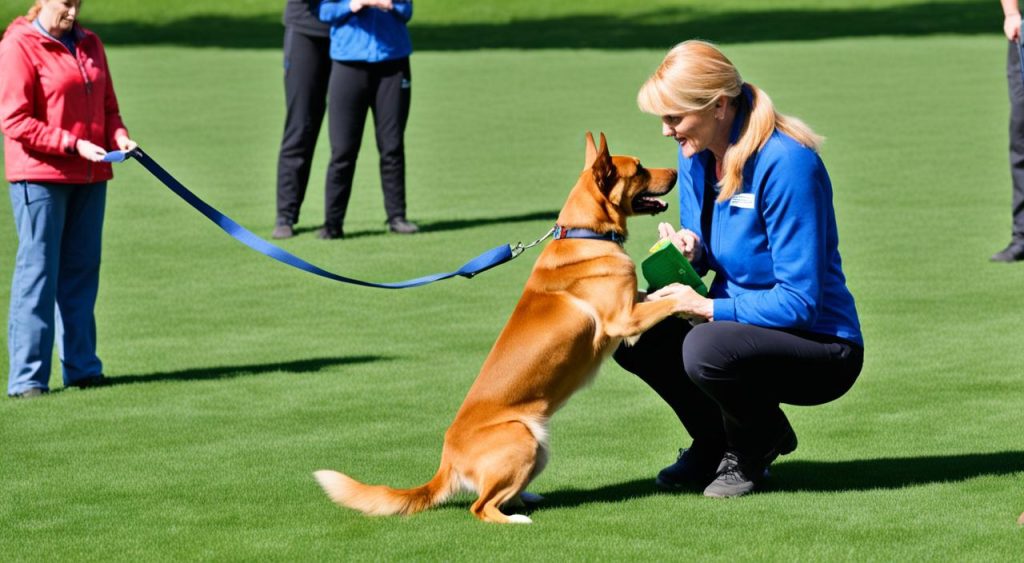
Early Socialization: A Must
Socializing your Broholmer puppy is vital. Expose them to various sights, sounds, and experiences. This builds confidence and reduces fear-based reactions.
Start with short, positive interactions. Gradually increase exposure as your puppy grows.
Basic Obedience Training
Obedience training is crucial for a well-behaved Broholmer. Use positive reinforcement for best results. Reward good behavior with treats, praise, or playtime.
Keep sessions short and fun. This helps maintain their interest in learning.
- Start with basic commands: sit, stay, come
- Practice leash training for walks
- Teach proper greeting manners
Advanced Training Opportunities
Broholmers can learn complex tasks with patience. They excel in obedience competitions and as service dogs. Some even enjoy agility courses.
Regular training keeps their minds sharp. It also strengthens the bond between you and your dog.
“A well-trained Broholmer is a joy to have around. Their calm nature and eagerness to please make them wonderful companions.”
Training a Broholmer takes time and effort. Stay consistent and use positive methods. Your gentle giant will flourish with proper guidance.
Health Considerations for the Broholmer Breed
Broholmers face health issues common to large breeds. Their lifespan typically ranges from 8 to 10 years. These gentle giants need special care to stay healthy and prevent breed-specific conditions.
Hip and elbow dysplasia are common concerns for Broholmers. Regular vet check-ups help monitor these joint issues. Eye and heart diseases also pose risks to this breed’s health.
Proper nutrition is vital for Broholmer health. A high-quality diet rich in protein helps maintain optimal health and weight. Keeping these large dogs at a healthy weight is crucial.
Obesity can worsen joint problems in Broholmers. A balanced diet and regular exercise can prevent weight gain and related health issues.
| Health Concern | Prevention/Management |
|---|---|
| Hip/Elbow Dysplasia | Regular vet check-ups, weight management |
| Eye Diseases | Routine eye exams |
| Heart Issues | Cardiac screenings, balanced diet |
| Obesity | Proper diet, regular exercise |
Broholmers can lead happy, active lives with proper care. Early socialization and regular exercise are important for their well-being. A loving home environment also contributes to their overall health and longevity.
Grooming and Care for Your Broholmer
Proper grooming keeps your Broholmer healthy and looking great. These gentle giants need specific coat care and shedding management. Let’s explore their grooming needs.
Coat Maintenance and Shedding
Broholmers have a short, dense coat that sheds moderately year-round. Weekly brushing usually suffices for coat care. During spring and fall, daily brushing may be needed to manage increased shedding.
Regular grooming helps spread natural oils and maintains a healthy coat. This simple routine keeps your Broholmer’s fur in top condition.
Bathing and Nail Trimming
Broholmers don’t need frequent baths due to their weather-resistant coat. Bathe your dog every few months or when they get very dirty. Trim their nails regularly to prevent discomfort and health issues.
Dental Care and Ear Cleaning
Dental hygiene is crucial for Broholmers. Brush their teeth at least three times a week to prevent tartar and infections. Clean their ears weekly to avoid infections, which can be common in large breeds.
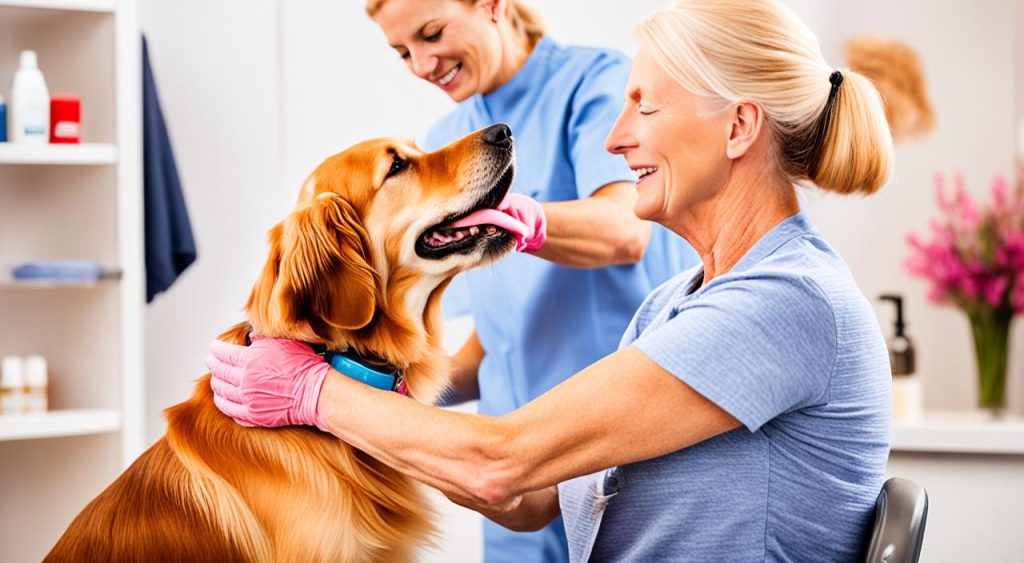
| Grooming Task | Frequency | Importance |
|---|---|---|
| Brushing | Weekly (Daily during shedding seasons) | High |
| Bathing | Every few months | Moderate |
| Nail Trimming | Monthly | High |
| Teeth Brushing | 3 times per week | Very High |
| Ear Cleaning | Weekly | High |
These grooming practices keep your Broholmer healthy, comfortable, and looking their best. Regular care maintains their appearance and strengthens your bond. Your gentle giant will thrive with your loving attention.
Broholmers as Family Pets: Compatibility and Considerations
Broholmers are gentle giants that make great family dogs. They bond strongly with their families and offer protection without aggression. Their large size needs supervision around small children.
These dogs can live in apartments but prefer houses with yards. They need 30-60 minutes of daily exercise to stay healthy and happy. Regular activity helps manage their weight, which can reach up to 80 kg.
Early socialization is crucial for Broholmers. It helps them grow into well-adjusted adults. Well-socialized Broholmers usually get along with other pets at home.
“Broholmers combine a calm demeanor with protective instincts, making them ideal for families seeking a loyal and gentle guardian.”
Keep these factors in mind when getting a Broholmer:
- Space requirements: Ample room for movement and rest
- Exercise needs: Daily walks and play sessions
- Grooming: Weekly brushing to manage their short, dense coat
- Training: Consistent leadership and positive reinforcement
- Health care: Regular vet check-ups to monitor for breed-specific issues
A well-cared-for Broholmer can be a loving family companion for 8 to 12 years. They’ll enrich your home with their gentle nature and unwavering loyalty.
The Broholmer’s Role as a Working Dog
The Broholmer is a robust working dog breed with a rich history. These gentle giants have served in various roles for centuries. They’ve adapted to changing needs over time.
Historical Working Purposes
Broholmers originally served as versatile working dogs in Denmark. Their main jobs included hunting large game and guarding noble estates. They also protected livestock and flocks from predators.
These tasks showed off the breed’s strength, intelligence, and protective nature. Broholmers excelled as guard dogs. They used their imposing size and calm demeanor to deter threats.
Modern-day Working Capabilities
Today, Broholmers continue to shine in various working roles:
| Role | Description |
|---|---|
| Family Guardian | Protects home and family with natural vigilance |
| Therapy Dog | Provides comfort in hospitals and nursing homes |
| Service Dog | Assists with tasks like opening doors and retrieving items |
| Search and Rescue | Utilizes keen sense of smell in search operations |
Their calm nature and trainability make Broholmers great for modern roles. As service dogs, they help with daily tasks and give emotional support. Their size and gentle nature make them ideal therapy dogs.
Broholmers no longer hunt, but they keep their protective instincts. This makes them great family guardians. Their smarts and loyalty help them adapt to many work situations.
Nutritional Needs and Feeding Guidelines for Broholmers
Broholmers need a special diet due to their large size. Good nutrition keeps these gentle giants healthy and happy. Their meals should match their size, age, and how active they are.
Pick high-quality dog food with real meat as the main ingredient. Avoid corn or soy fillers that may upset their stomachs. Add omega fatty acids to keep their coat shiny and healthy.
Watch your Broholmer’s weight to avoid joint problems. Split their food into two meals each day. This helps prevent bloat, which can be dangerous for deep-chested dogs.
- Choose foods tailored for large breeds
- Prioritize real meat ingredients
- Include omega fatty acids for coat health
- Control portions to prevent obesity
- Feed twice daily to reduce bloat risk
Talk to your vet about the best diet for your Broholmer. They can help you adjust food amounts based on your dog’s needs. This ensures your gentle giant gets the right nutrition.
Adopting a Broholmer: What to Know and Where to Find One
Broholmers are gentle giants standing 27-30 inches tall and weighing up to 150 pounds. These dogs need plenty of space and exercise. Plan for at least an hour of daily playtime to keep your new friend happy.
Broholmers are rare outside Denmark, but their popularity is growing. Look into breed-specific rescue organizations or contact the Broholmer Society to find one. When working with breeders, ask for health clearances and meet the puppy’s parents.
These dogs live 8-10 years, so be ready for a long-term commitment. Early socialization and training are crucial for Broholmers. They’re intelligent and eager to please, making them easy to train.
Consistent guidance helps Broholmers develop good social skills due to their large size. With proper care, you’ll have a loyal, protective, and gentle companion. Broholmers are great with children and other pets.
FAQ
What is the origin of the Broholmer breed?
The Broholmer, or Danish Mastiff, comes from Denmark. It started as a hunting dog in the 1500s. Later, it became a guardian for homes and farms.
What are the physical characteristics and size of the Broholmer?
Broholmers are large, muscular dogs with big heads and deep chests. Males can weigh over 130 pounds and stand 30 inches tall. Females weigh 80-110 pounds and stand about 25 inches tall.
What is the temperament of the Broholmer like?
Broholmers are calm, gentle, and even-tempered. They form deep bonds with their families and are protective. When socialized, they’re good with children and other pets.
How much exercise does a Broholmer need?
Broholmers need moderate exercise. They require 30-60 minutes of daily activity. This can include walks, hikes, or play sessions.
Are Broholmers easy to train?
Broholmers are smart but can be stubborn. Early socialization and positive reinforcement work best. Short, consistent training sessions are ideal for this breed.
What are some common health concerns for the Broholmer breed?
Broholmers may have hip and elbow dysplasia, and bloat. Regular vet check-ups, good diet, and exercise help keep them healthy.
How much grooming does a Broholmer require?
Broholmers need moderate grooming. Weekly brushing is usually enough. Daily brushing is needed during shedding seasons. Regular nail, teeth, and ear care are important.
Are Broholmers good family pets?
Broholmers make great family pets. They’re gentle with kids but need supervision due to their size. These dogs do better in houses with yards.
What are the historical working purposes of the Broholmer?
Broholmers hunted large game and guarded nobility. Now, they’re family guardians and watchdogs. They can also be service dogs and therapy dogs.
What are the nutritional needs of a Broholmer?
Broholmers need high-quality food with real meat. Portion control prevents obesity, which can hurt joints. Feed based on age, weight, and activity level.
Where can I adopt or purchase a Broholmer?
Broholmers are rare outside Denmark. Try breed-specific rescues or contact the Broholmer Society. If buying from a breeder, ensure they follow ethical practices.
